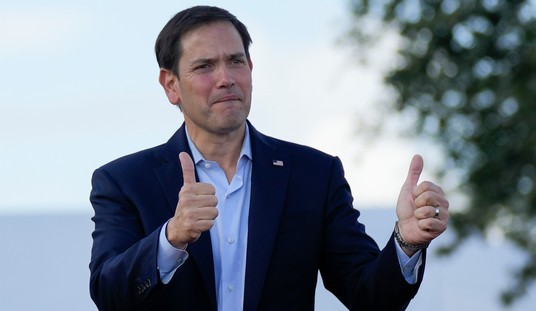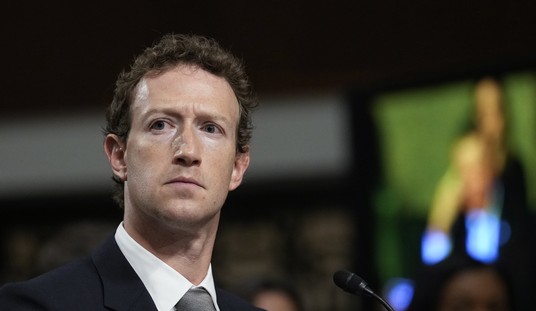A funny thing is happening on the way to the impending health care showdown, as the Democrats try to turn the newly-passed House bill into something that can pass both Houses of Congress: Democrats are divided over abortion, and their divisions threaten to wreck the bill. With government-run health care having passed the House with only a 3-vote margin of victory, 60 votes needed in the Senate, and pro-life and pro-choice Democrats both vowing to go to war over the bill’s abortion provisions, the whole legislative initiative can be put at risk by even a small number of defectors.
The Democrats’ divisions over abortion may surprise casual observers. If you’ve tried getting your news from the mainstream media any time in the last three decades or so, you have undoubtedly seen more variations on the headline “Abortion Divides GOP” than you could count. The basic narrative is usually some variant on the notion that the Republican Party would be one big happy family if it weren’t for those awful pro-lifers. The MSM will write stories from this template at the drop of a hat, with the goal of feeding a larger narrative that one side of the abortion debate is “divisive” and that this problem is a Republican problem because being a pro-lifer is synonymous with being a right-wing woman-hating extremist. The idea that there might be broader bipartisan support for the pro-life movement seems never to have occurred to the media.
That’s where this weekend’s vote over the Stupak Amendment, which amended the House version of the health care bill to bar federal health care dollars from being spent on abortions, comes in.
Presumably believing her own rhetoric about pro-lifers being beyond-the-pale extremists whose opinions no longer matter in today’s Democratic-run Washington, Speaker Pelosi had fought for months to resist any efforts to prevent taxpayer dollars from being used to finance abortions under Obamacare. This recalcitrance belied President Obama’s repeated rhetorical efforts to convince the public that the bill was abortion-neutral, and created a political problem even the New York Times was forced to acknowledge: especially since the 2006 and 2008 elections, in which Rahm Emanuel recruited many Democratic candidates to run in districts where the pro-life cause is strong, there are once again a fairly substantial number of Congressional Democrats who call themselves pro-life, and they really do not want to be compelled to choose between voting against a health care bill and voting in favor of taxpayer funding of abortion. The ultimate vote in the House on the Stupak Amendment drew surprising Democratic support: 64 votes, contributing to the measure’s resounding 240-194 victory. This reality came as a shock to pro-choice hardliners like Connecticut Democrat Rosa DeLauro:
[W]hen Pelosi announced late Friday that she would allow an amendment strictly limiting insurance coverage of abortions, it touched off an angry yelling match between DeLauro and another Pelosi confidant, California Rep. George Miller, and tears from some veteran female lawmakers, according to people in the room.
Some of the lawmakers argued that Pelosi was turning her back on a decades-long campaign by female Democratic members in support of abortion rights. Miller rose to Pelosi’s defense, which resulted in an angry confrontation between him and DeLauro, said the sources.
Miller told DeLauro that there were “more pro-life votes in the House than pro-choice” and that abortion-rights advocates had better acknowledge that reality.
By this morning, this was entrenched as a Democratic talking point, as California’s Loretta Sanchez repeated on Morning Joe that even with a wide Democratic majority, pro-lifers are in the majority in the House and the pro-choicers have only about 150 votes.
Now, longtime pro-life activists are justifiably somewhat skeptical that “pro-life” Democrats really ever mean it. While there have at times been true warriors for the pro-life cause in the Democratic Party, notably the late Pennsylvania Governor Bob Casey (who fought all the way to the Supreme Court to overturn Roe v Wade in 1992), the usual pro-life Democrat tends to be a mushy-middle sort who isn’t up to change the Roe status quo and will choose party loyalty in any difficult battle over, say, the composition of the Supreme Court, but at the same time is willing to sign on to restrictions at the extreme margins of the issue, like partial-birth abortion and the Born Alive Infant Protection Act.
But the health care bill, by virtue of its intrusive nature, makes neutrality impossible, and thus may have pushed a number of these reluctant pro-lifers into a position where they had no choice but to vote for what they profess to believe. Contrary to what Obama claims, true neutrality is not possible when the government gets so deeply entangled in an area of life as this bill proposes to get the government into the provision of health care. Such a bill cannot be “pro-choice” in the sense of leaving mothers to make their own decision on their own private dime; it can only be pro-abortion, by providing federal subsidies for abortion coverage, or anti-abortion, by denying them where in the past they may have been funded by purely private insurance.
The Stupak Amendment “would bar anyone receiving a federal subsidy from purchasing a private plan that covers elective abortion. In addition, under Stupak, the public plans would not be allowed to offer abortion coverage prohibited under the Hyde amendment.” Pro-choicers claim that this is actually an expansion of the Hyde Amendment’s scope and would squeeze out private plans that cover abortion – but they somehow miss that that’s how the bill would work with regard to everything it touches, not just abortion. As Phil Klein puts it:
[T]he need for the controversial measure is a direct consequence of liberal efforts to have the government take over the health care system. The amendment, proposed by Reps. Bart Stupak (D-MI) and Joe Pitts (R-PA), would merely extend protections under current law that prevent taxpayer funding for abortion through government health care programs such as Medicaid. The only reason the Stupak-Pitts amendment would apply restrictions to the private market is that the government would be drastically expanding its role in the private market as a result of the health care legislation.
Currently, women are able to purchase private health care plans that cover abortion because it remains a legal procedure and we still have a private market for the sale of health insurance. But if the House Democratic health care bill becomes law, individuals will only be allowed to purchase health insurance through a government-run exchange. And because millions of Americans will be using government subsidies to purchase insurance through the exchange, suddenly lawmakers get to have a say on what kind of private insurance policies individuals can purchase. In addition, the federal government would be directly operating one of the plans, known as the “public option.”
In short, pro-life Democrats were left no other option than to demand a clear affirmative prohibition on the use of federal funds to subsidize abortion. Politico reports that Stupak threatened to vote against the bill unless his amendment was included and that “a big bloc of anti-abortion Democrats were threatening to derail the entire bill unless party leaders agreed to stronger restrictions” demanded by the U.S. Conference of Catholic Bishops, which has pushed for health care legislation but refuses to support it without something on the lines of the Stupak Amendment. In all, 42 Members of the House (including the lone GOP vote for the bill, Joseph Cao) voted for both the Stupak Amendment and the final bill, well in excess of the 3-vote margin for error provided by the bill’s ultimate 220-215 victory. Stupak told the Wall Street Journal that he has more than enough votes to scuttle the whole bill if his amendment is removed:
“We won because [the Democrats] need us,” says Mr. Stupak. “If they are going to summarily dismiss us by taking the pen to that language, there will be hell to pay. I don’t say it as a threat, but if they double-cross us, there will be 40 people who won’t vote with them the next time they need us – and that could be the final version of this bill.”
In the Senate, the health care bill already faces a rocky road; the death of Ted Kennedy and Joe Lieberman’s vow to join the GOP filibuster of the bill leave the Democrats starting with 58 votes (59 if they can get Maine Republican Olympia Snowe to stay on board with the bill), and Nebraska Democrat Ben Nelson says he needs the Stupak Amendment in the bill to support it:
Sen. Ben Nelson (D-Neb.) wants to see abortion language as restrictive as the Stupak amendment in the health care reform bill, his spokesman told POLITICO Monday.
“Senator Nelson is strongly prolife and was pleased the Stupak amendment passed with such strong support,” Thompson said in a statement. “He believes that no federal money – including subsidies or tax credits – should be used to buy insurance coverage for abortion. This is a very important issue to Senator Nelson and it is highly unlikely he would support a bill that doesn’t clearly prohibit federal dollars from going to abortion.”
Thompson said Nelson could not support anything less than Stupak amendment.
In terms of strategy, Nelson is still evaluating options, Thompson added.
The last line is significant: the bill needs 60 votes to overcome a filibuster but only 50 “yes” votes, and unlike Lieberman, Nelson hasn’t vowed to filibuster. Nor have we heard a firm answer from putative pro-lifers like Gov. Casey’s son, now a Pennsylvania Senator, or from at-risk Senators like Blanche Lincoln who need to face strongly pro-life electorates to get re-elected (Sen. Reid is himself nominally pro-life but not expected to do anything about it).
Lest you believe that the Democrats can hold the wavering pro-lifers in place by maintaining the Stupak Amendment, however, the pro-choice hardliners are also threatening to kill the bill unless it’s removed. As the Washington Post reported:
Rep. Diana DeGette (Colo.) said she has collected more than 40 signatures from House Democrats vowing to oppose any final bill that includes the amendment — enough to block passage.
“There’s going to be a firestorm here,” DeGette said. “Women are going to realize that a Democratic-controlled House has passed legislation that would prohibit women paying for abortions with their own funds. . . . We’re not going to let this into law.”
The Post’s in-house left-wing activist, Greg Sargent, has a copy of the letter. DeGette has the pledged support of at least one member of the House Democratic leadership:
Rep. Debbie Wasserman Schultz (D-Fla.), the Democrats’ chief deputy whip in the House, said that she and other pro-choice lawmakers would work to strip the amendment included in the House health bill that bars federal funding from going to subsidize abortions.
“I am confident that when it comes back from the conference committee that that language won’t be there,” Wasserman Schultz said during an appearance on MSNBC. “And I think we’re all going to be working very hard, particularly the pro-choice members, to make sure that’s the case.”
Senate pro-choice Democrats, led by Barbara Boxer, have similarly drawn a line in the sand:
Senator Barbara Boxer (D-Calif.) said that 60 votes would be needed to strip the current health care bill of its abortion-related language and replace it with a version resembling that passed by the House of Representatives on Saturday. And, in an interview with the Huffington Post, the California Democrat predicted that pro-choice forces in the Senate would keep that from happening.
“If someone wants to offer this very radical amendment, which would really tear apart [a decades-long] compromise, then I think at that point they would need to have 60 votes to do it,” Boxer said. “And I believe in our Senate we can hold it.”
“It is a much more pro-choice Senate than it has been in a long time,” she added. “And it is much more pro-choice than the House.”
Boxer’s reading of the political landscape might seem like the hopeful spin of an abortion-rights defender. But it was seconded by a far less pro-choice lawmaker, Sen. Max Baucus (D-Mont.)
“It would have to be added,” sad the Montana Democrat of an amendment that mirrored that offered Rep. Bart Stupak (D-Mich.) in the House. “I doubt it could pass.”
Boxer is relying on Senate procedural rules regarding the original bill, as opposed to the conference report, but in either event, as in the House, the battle over the original bill will be a warning shot about what could possibly pass both Houses following a conference:
Currently, the Senate bill’s language would allow for insurers participating in a health care exchange to cover abortions so long as they ensured that federal funds are not used to pay for the procedure. An amendment similar to Stupak[‘s] effort — which was offered by Senator Orrin Hatch (R-Utah) — had already been voted down in the Senate Finance Committee.
To re-introduce such a provision, Boxer said, 60 senators would be required to cut off debate on the floor. And the votes for that, she said, likely won’t materialize.
Some pro-choice Democrats, led by Lynn Woolsey, Chairman of the Congressional Progressive Caucus, are not just looking to strip the Stupak Amendment, but calling as well for an investigation of the Catholic Bishops’ role in the Amendment, a posture that effectively would require them to investigate the Bishops’ coordination with 64 of their own Members.
Unsurprisingly, given his extreme record on abortion, President Obama seems to have joined the chorus looking to water down or remove the Stupak Amendment, although in the end it seems unlikely that Obama has much say in the process, given that he’s likely to vote for just about anything he can call a health care bill:
Saying the bill cannot change the status quo regarding the ban on federally funded abortions, the president said, “There are strong feelings on both sides” about an amendment passed Saturday and added to the legislation, “and what that tells me is that there needs to be some more work before we get to the point where we’re not changing the status quo.”
+++
“I want to make sure that the provision that emerges meets that test — that we are not in some way sneaking in funding for abortions, but, on the other hand, that we’re not restricting women’s insurance choices,” he said.
At the end of the day, for all the conservative hand-wringing over Speaker Pelosi’s short-term tactical victory in allowing a vote on the Stupak Amendment and thus enabling passage of the bill through the House, the political reality remains: there may not be enough votes to pass the final bill with the Stupak Amendment, because of intransigence from pro-choice Democrats, and there may not be enough votes to pass the final bill without the Stupak Amendment, because of intransigence from pro-life Democrats. And that’s even before we get to the fissures among the Democrats and with the public at large over taxes, spending, individual mandates, the public option, tort reform, immigration, and euthanasia.
There are two ensuing lessons for Democrats, if that turns out to be the case. One is that a Democratic majority in this country is only possible if Democrats make real, rather than just rhetorical, concessions to the pro-life movement. And the other is that, for all of the grand ambitions of progressives, any bill that drives this far and this deep into American life is bound to expose long-dormant fault lines in any political coalition.














Join the conversation as a VIP Member